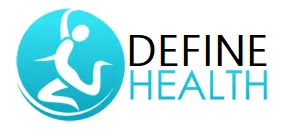Achilles tendinitis
Achilles tendinitis
What is Achilles tendinitis?
We all are quite aware that stress
on particular part of our body or its overuse can cause inflammation or
swelling on that particular organ. Same is the case in context with Achilles
tendinitis. Now, you must be wondering where this particular organ is located.
Well, Achilles tendinitis is a condition associated with Achilles tendon that
is a conduit between your calf muscle and the heel bone. The primary use of
this part is made for walking, running, jumping and related movements of foot.
 |
| Achilles tendinitis |
How does it work?
The calf constitutes two big
muscles: soleus and gastrocnemius. The force to push off the toe or the foot is
generated by these two muscles. These muscles are joined to the heel by the
Achilles tendon.
About Achilles tendinitis
Many times due to multiple reasons
we feel swelling, inflammation or severe pain radiating from the heel. This
condition is termed as Achilles tendinitis or tendinitis of the heel. In some
cases the condition the sufferer also feels irritation or burning sensation at
the heel.
Causes of Achilles tendinitis
Achilles tendon and the associated
muscles are very vital for overall functioning and movement of feet. When this
tendon becomes inflamed due to injury, infection, arthritis or even owing to
overuse, this condition is called Achilles tendinitis. Athletes, runners, or
walkers or even gymnasts involved in stressful physical limb activities are
more prone to such painful conditions. Even sports such as basket ball or
volley ball requiring the players to jump regularly on the toes can lead to
Achilles tendinitis.
Many times due to unexpected
increase in the type of work that can put more stress on feet or toe also leads
to this condition even in common people. Most often than not while exercising
or doing some labor work, if the calf muscles remain tight, then also the
person can experience sparking pain from the heel. In the middle age, Achilles tendinitis is
generally caused by arthritis. Outgrowth of bone in the Achilles tendon area
can result in irritation, swelling and pain.
Symptoms of Achilles tendinitis
The common symptoms of Achilles
tendon are pain emanating from heel while walking or running and numbness or
tenderness around the tendon. Due to swelling the tendon may also appear stiff
in the early morning. Many times you may notice swelling or warm sensation in
this particular area and may cause problem while getting up on the toes.
Diagnosis and tests
In Achilles tendinitis the first
thing you notice that early in the morning your heel feels very stiff and
painful. The swelling makes the whole surrounding part very delicate to touch
and even basic activities like walking or standing become troublesome. If such
a condition persists for several days, its time that you visit your healthcare
practitioner and get some advise. So as to confirm whether you are suffering
from Achilles tendinitis he will initially perform physical examination. He
will check the tenderness of tendons and may see your reaction when you walk or
stand on your toes. If the condition is very severe sometimes even an X-ray too
can be recommended. This becomes quintessential in case of swelling on tendon
due to injury or accident. If the X-ray reports are not convincing or reveal
some tendon tear, MRI scanning too can be advised. This helps the doctor to
come to conclusion regarding the treatment-whether it can be cured by medicines
or surgery is necessary.
Treatments
Generally, surgery is not needed
in case of Achilles tendinitis and with proper care and medication the pain may
wane off in couple of months. One of the most important advices in such
condition is to rest the feet as much as possible and relieve it off stressful
activities. Ice therapy is one of the most common home treatments which have
been known to cause wonderful results. The patient is asked to put ice on the
swollen tendon for 15 to 20 minutes at least thrice a day. The ice should be
removed if the area gets numb. Some other precautionary measures like using
boots or braces, walking only on soft surfaces, change of footwear, switching
to less stressing activities like swimming or cycling can help reduce the pain.
Common medications prescribed are aspirin and ibuprofen which should be taken
under the guidance of your physical care taker.
When these treatments fail to
work, surgery is advised in which the inflamed or outgrown tissue of tendon is
removed. Extracorporeal shock wave therapy (ESWT) is also recommended to some
patients who do not wish to undergo surgery. In this therapy, sound waves in
low doses are used.



